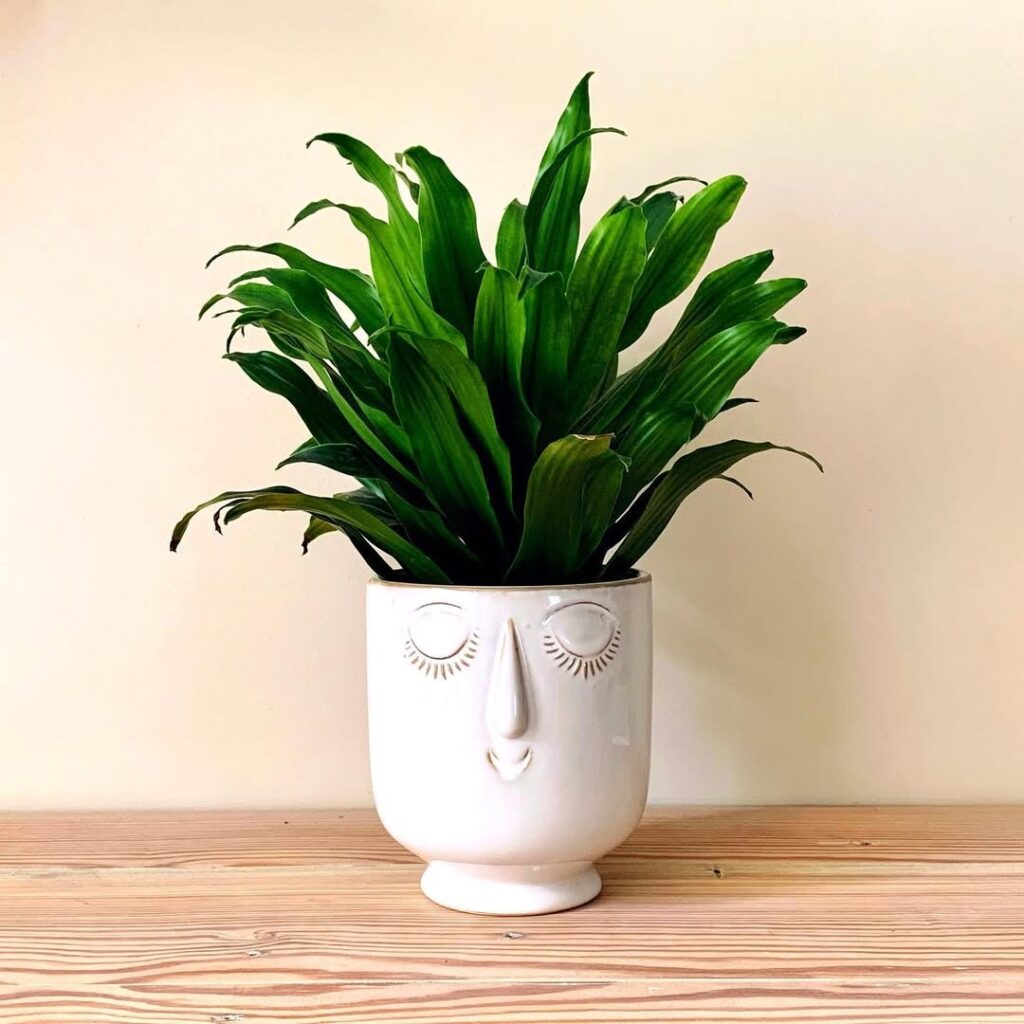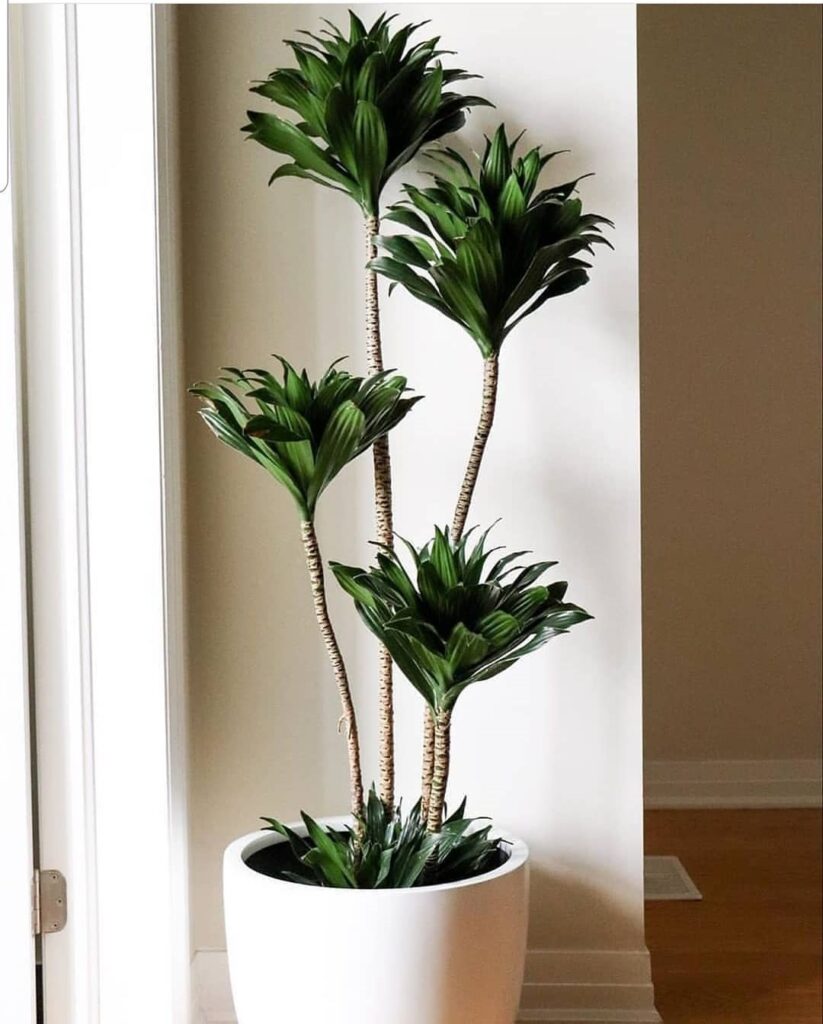Dracaena plants are among the most popular houseplants, known for their striking appearance and easy care requirements. With their long, arching leaves and variety of species, Dracaena plants can add a touch of elegance and tropical beauty to any indoor space. In this guide, we’ll cover everything you need to know to keep your Dracaena plants thriving.

Contents
Why Choose Dracaena Plants?
Dracaena plants offer several benefits:
- Air Purification: They help remove toxins like formaldehyde and benzene from the air.
- Low Maintenance: They require minimal care, making them ideal for busy lifestyles.
- Aesthetic Appeal: Their striking foliage adds a touch of elegance to any room.
Types of Dracaena Plants
Dracaena is a diverse genus with many species that make excellent houseplants. Here are some of the most popular types:
Dracaena marginata (Dragon Tree)

Characterized by its thin, arching leaves and slender stems, Dracaena marginata adds a dramatic touch to any space. It’s one of the most popular Dracaena varieties for indoor use.
Dracaena fragrans (Corn Plant)

Known for its broad, arching leaves that resemble corn leaves, Dracaena fragrans is a versatile and resilient plant. It often features variegated foliage with green and yellow stripes.
Dracaena reflexa (Song of India)

This variety is known for its bright, variegated leaves with yellow or cream edges. Dracaena reflexa is a bushy plant that can add a splash of color to your indoor garden.
Dracaena deremensis (Janet Craig)

This variety has dark green, glossy leaves and is known for its ability to thrive in low light conditions. It’s a popular choice for offices and homes with minimal natural light.
Dracaena sanderiana (Lucky Bamboo)

Despite its name, Lucky Bamboo is not bamboo at all. This plant features thin, straight stems and small leaves. It’s often grown in water but can also be potted in soil.
Dracaena compacta (Compact Dragon Tree)

A more compact version of Dracaena marginata, this variety has tightly packed leaves and a bushy appearance. It’s perfect for smaller spaces.
Ideal Growing Conditions
Light
Dracaena plants are highly adaptable and can thrive in low to moderate light conditions. They prefer bright, indirect light but can tolerate low light. Avoid direct sunlight, which can scorch the leaves.
Water
Dracaena plants prefer to dry out slightly between waterings. Water when the top inch of soil is dry, which is typically every 1-2 weeks. Overwatering can lead to root rot, so it’s important to avoid letting the plant sit in water.
Soil
Use a well-draining soil mix. A standard potting mix with added perlite or sand works well. Ensure the pot has drainage holes to prevent water from pooling at the bottom.
Temperature and Humidity
Dracaena plants prefer temperatures between 60-75°F (15-24°C). They thrive in moderate to high humidity. If your home has dry air, especially in winter, consider using a humidifier or misting the leaves occasionally.
Fertilizing
Feed your Dracaena plants during the growing season (spring and summer) with a balanced liquid fertilizer diluted to half strength. Fertilize once a month to provide essential nutrients for healthy growth.
Potting and Repotting
Dracaena plants are slow growers and can stay in the same pot for several years. However, when the plant outgrows its pot or you notice roots coming out of the drainage holes, it’s time to repot:
- Choose a pot that is 1-2 inches larger in diameter than the current one.
- Fill the new pot with a well-draining soil mix.
- Gently remove the plant from its old pot and shake off excess soil.
- Place the plant in the new pot and fill around it with soil.
- Water lightly and place it in a suitable location.
Propagation
Dracaena plants can be propagated through stem cuttings:
- Cut a healthy stem from the plant, including several nodes.
- Allow the cutting to callous over for a few days.
- Place the cutting in water or soil.
- If using water, change the water weekly until roots form, then plant in soil.
- If using soil, water sparingly until roots form.
Common Problems and Solutions
Yellow Leaves
Yellow leaves are often a sign of overwatering. Allow the soil to dry out completely between waterings and reduce the frequency of watering.
Brown Tips
Brown tips on the leaves can be caused by dry air or inconsistent watering. Increase humidity by misting the leaves or using a humidifier and ensure even watering.
Root Rot
Root rot is caused by overwatering. Remove affected roots, repot in fresh soil, and water sparingly. Ensure the pot has proper drainage to prevent waterlogging.
Styling Tips
Dracaena plants are versatile and can be placed in various locations in your home:
- Living Room: A large Dracaena can be a striking focal point in your living room.
- Bedroom: Known for its air-purifying properties, it’s perfect for creating a restful atmosphere in the bedroom.
- Office: Its low maintenance nature makes it ideal for workspaces, adding a touch of greenery without requiring constant attention.
Conclusion
Dracaena plants are resilient and attractive additions to any indoor garden. With minimal care, they will reward you with their striking foliage and air-purifying benefits. Whether you’re a seasoned plant parent or a beginner, Dracaena plants are sure to thrive and bring a touch of elegance and tropical beauty into your home.
